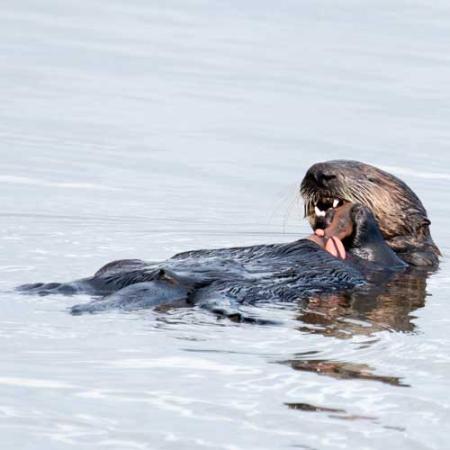What are you studying?
At a basic level, I’m studying the changes in anatomy that allow cetaceans (whales, dolphins, and porpoises) to efficiently swim in the water.
What are you working on right now?
At the moment, I’m focusing on a group of early dolphins, called kentriodontids, that lived about 16-18 million years ago. The Burke Museum has a fossil (specimen #88078) that has never been studied and may represent one of the only kentriodontids known from the Pacific Northwest. I’m fortunate enough to come examine it.
Why focus on this period of time?
This is a period of time when dolphins are undergoing the dramatic anatomical changes that make them truly unique from their early ancestors. One such change involves a transition from distinct molars to a homogenous tooth row; which likely signals a behavioral shift from chewing food to swallowing food whole as modern dolphins do today. The evolutionary history of dolphins is full of small changes such as this, and the fossil record enables us to see how and when they are happening.
What brought you to the Burke?
One of the hardest parts of paleontology is that the fossil record is incomplete. For every fossil that we find there are many, many more that aren’t preserved or will never be discovered. In some ways, it can be like putting together a jigsaw puzzle without all of the pieces. For this reason, every piece becomes extraordinarily valuable to understanding what the whole picture may have looked like.
The dolphin I am studying at the Burke Museum is a particularly great specimen, with nearly the entire animal preserved and complete. This gives us a very unique opportunity to study a nearly complete dolphin, and thus makes it an extremely valuable puzzle piece.
A special thanks to Carlos Peredo for sharing his work with us!
See more fossils in the Burke Museum paleontology collection database or learn more about the vertebrate paleontology collection study grant.




